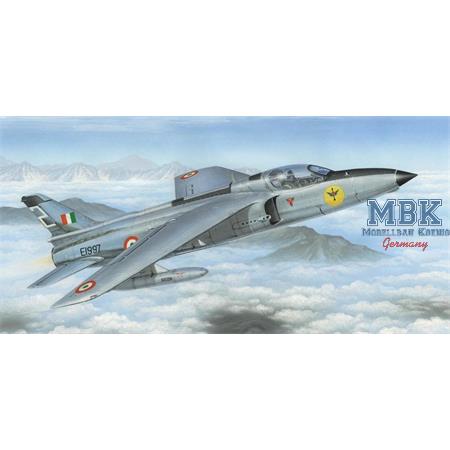HAL Ajeet Mk.I "Indian light Fighter"
SH72370
Special Hobby
1:72
At that time, modern jet aircraft were becoming larger, more complex and more expensive as their performance increased, and as a result, development and operating costs were also rising.
WE Petter decided to take a different approach to the modern jet fighter philosophy by designing a light combat aircraft to be powered by a pair of low-thrust turbojet engines.
These were later replaced by a single engine as jet engine performance increased.
The decision to make this new jet aircraft as small as possible and to equip it only with the basic equipment required for the task meant that the overall price was reduced to only a third of that of a normal jet fighter-bomber of the time.
Nevertheless, it performed similarly to the much larger and more expensive jets. The original design envisaged a pilot lying in the nose of the aircraft and a twin-engine configuration like that used in the Fo.139 Midge experimental aircraft, which had been designed and built to assess the aerodynamic characteristics of the future Gnat.
The Ministry of Aviation ordered six experimental aircraft from the drawing board in March 1955, all of which were delivered by 1956, and subjected them to very thorough flight testing in which the design performed excellently. The Gnat achieved high subsonic speeds, was exceptionally manoeuvrable at high altitudes, and thanks to its light weight and powerful engine, acceleration was phenomenal.
Two countries, Finland and India, found the results of these tests so interesting that they decided to acquire the type for their air forces. Finland ordered twelve aircraft, ten of which were built in the standard fighter configuration, while two aircraft were fitted with cameras in the nose for reconnaissance flights.
India acquired twenty-five complete British-built aircraft, while another twenty were supplied as kits to be assembled in India by HAL. The Indian production line produced at least one hundred and ninety-five aircraft, although the last two Indian Gnats were in fact prototypes of the improved Ajeet Mk.1 version.
Production of this improved design began in 1976 and reached a total of seventy-nine Ajeets, with a further ten Ajeets created from modified Gnat cells.
While the Finnish Gnats maintained their country's neutrality status, the Indian machines were involved in hot conflicts during the 1965 India-Pakistan war.
Surprisingly, they became the most effective aircraft type of that war as they could outmanoeuvre not only the F-86 Sabre but also the more modern and much faster F-104A Starfighter.
Because of its small size and excellent manoeuvrability, the tiny Gnat could shake off Sidewinder air-to-air missiles and was very difficult for Pakistani fighter pilots to see, let alone shoot down. Indian Gnats proved equally successful during the later conflict against Pakistan, which ended in 1971. The upgraded Ajeet remained in Indian service long after the Gnat was retired and was used until at least 1991.
Plastic model kit
Scale 1:72
unbuilt / unpainted
Write now your personal experience with this article and help others with their purchase decision.





